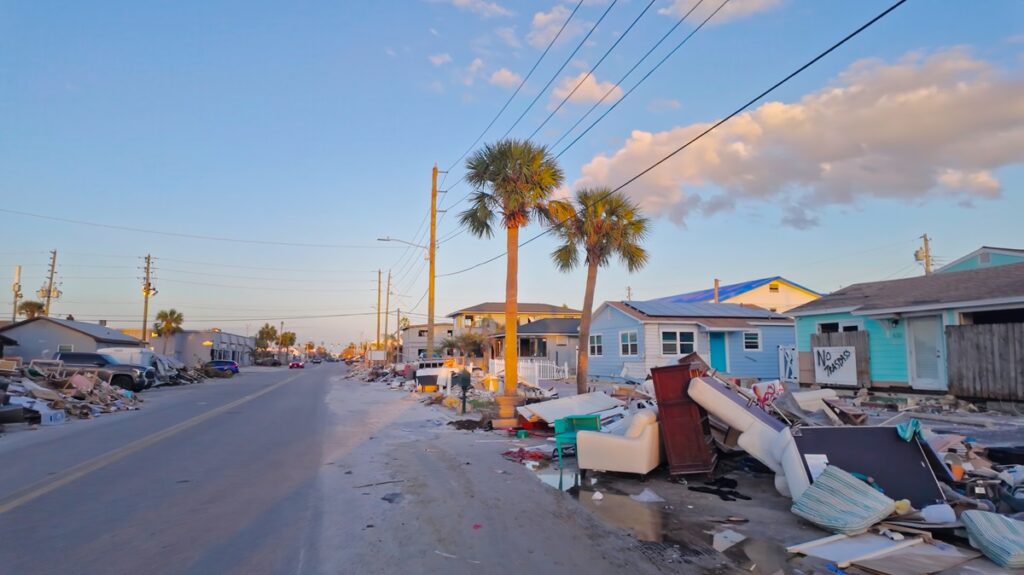As the nation enters the 2025 hurricane and wildfire season, the costs of climate-related events are posing greater challenges to both insurers and their customers alike.
A recent report from the U.S. Department of the Treasury’s Federal Insurance Office (FIO) found the average homeowners’ insurance premium per policy increased 8.7% faster than the rate of inflation in 2018-2022. Some consumers in more at-risk areas faced substantially larger premium increases than the national average.
Another study, Deep Sky Research’s “Wildfires 2025,” an analysis of insurance market data from California, Oregon, Texas, and Washington alongside advanced fire weather modeling, reveals how climate change is reshaping both wildfire risk and financial markets. The research builds on Deep Sky’s previous wildfire analysis from 2024, which found that extreme fire risk frequency had grown 20-fold across the U.S.
As far as the 2025 hurricane season is concerned, the National Oceanic and Atmospheric Administration (NOAA) projects that for the 2025 Atlantic hurricane season, which spans from June 1 to November 30, a 30% chance of a near-normal season is anticipated, a 60% chance of an above-normal season is anticipated, and a 10% chance of a below-normal season is anticipated. NOAA is forecasting a range of 13-19 total named storms (winds of 39 mph or higher), and of those, six to 10 are forecast to become hurricanes (winds of 74 mph or higher), including three to five major hurricanes (Category 3, 4, or 5; with winds of 111 mph or higher).
Whether it be fire or water, the path of destruction is impacting homeowners nationwide, leaving record losses in the wake of recent storms.
Who is Paying the Most?
Data from the U.S. Treasury found that homeowners in communities impacted by substantial weather events are paying far more than those elsewhere. From 2018-2022, consumers living in the 20% of zip codes with the highest expected annual losses to buildings from climate-related events paid $2,321 in home insurance premiums on average, 82% more than those in the 20% lowest climate-risk zip codes.
“Between juggling the rising cost of home insurance premiums and other daily expenses, Americans are tightening their budgets right now, but insurance isn’t the place to cut corners,” said Bankrate Insurance Expert Shannon Martin. “Keep in mind that FEMA is undergoing budgetary changes and plans to shift some of the responsibility of disaster relief from the federal government to the states. This could limit the availability and effectiveness of federal assistance, especially immediately following a storm. Having an active homeowners insurance policy and an emergency savings account is more important this year than in the past.”
Recent data from LendingTree suggests that households in prominent Tornado Alley states—Oklahoma, Nebraska, and Kansas—spend the highest percentage of their income on home insurance. Oklahoma is the highest, with 6.84% or $6,133 of household income for home insurance. This is more than a percentage point higher than in the next highest state, Nebraska, at 5.73% or $5,912. Kansas is third at 5.58% or $5,412. That same study from LendingTree found that Hawaiian households spent the least percentage of income on home insurance. Just 0.48% or $632 of household income goes toward home insurance in the state, ahead of California (0.88% or $1,260), and the District of Columbia (1.04% or $1,764).
The status of California may change moving forward as CalFire reports that on January 24, 23,448 acres of land were destroyed by the fire; with 79% of the fire contained. As of January 28, the Palisades Fire in the Los Angeles region has been confirmed to have destroyed 6,837 homes and other structures and burned a total of 23,448 acres.
Policy Non-Renewals Highest in Areas With Greatest Expected Losses
Consumers in the highest risk zip codes faced higher policy nonrenewal rates, with average nonrenewal rates approximately 80% higher than those in the lowest risk zip codes. Moreover, average nonrenewal rates increased more in the highest risk areas than in the lowest risk areas over this period, which indicates that consumers faced decreasing availability.
While some California counties have some of the highest nonrenewal rates, residents living along the Carolina and Louisiana coasts, in southern Florida, and in Oklahoma were affected in 2023, according to a U.S. Senate Budget Committee’s findings of home insurance nonrenewal rates.
“Insurance markets are leading indicators of how financial systems will respond to climate change,” said Max Dugan-Knight, Deep Sky Climate Data Scientist.
Insurers Facing Mounting Operational Costs
Insurers’ costs in 2018-2022 were higher in areas with the highest expected losses from climate-related perils. The paid loss ratio, which reflects how much insurers paid for claims relative to what they received in premiums, was highest in the highest risk zip codes. These areas had a higher frequency of claims and severity of claims, about $24,000 on average compared to an average of about $19,000 for lowest risk areas.
Homeowners in high-risk areas of flooding or storm surges, for example in Florida, has found they are unable to get policies. Many home insurance companies in Florida have been forced to pull back altogether, leave the state, or even go out of business. Some insurance companies that have left Florida or have reduced their exposure in the area include Farmers, Progressive, and AAA.
“When insurers can no longer price risk effectively, they exit the market entirely. This creates a cascade effect that will ultimately impact property values, mortgage availability, and regional economic stability,” said Dugan-Knight.
Tariff Impact on Storm Preparedness
As the hurricane season gets underway, the recent tariffs imposed by President Trump may play a more significant role as mounting tariff prices are sure to hit the wallets of Americans getting storm ready. Items such as plywood, nails, and generators may see significant price hikes, with costs ultimately falling upon consumers.
“Homeowners may not realize that tariffs can impact the cost of basic hurricane prep—things like plywood, roofing nails and even generators,” added Bankrate’s Martin. “Aside from the 10% baseline tariffs currently in place, most of the Trump-era tariffs are temporarily suspended until mid-July, so there is a narrow window where prices might hold steady. But if the higher tariffs roll out in the middle of hurricane season, Americans could face price spikes and shortages for critical mitigation supplies when they need them most. If you haven’t bought what you need to make it through hurricane season yet, now is the time.”
Will FEMA be Ready to Answer the Call?
And as President Trump’s administration looks to cut back many governmental agencies, the Federal Emergency Management Agency (FEMA) remains in the line of fire, with cuts threatened to both FEMA’s budget and staff.
President Trump told victims of the Hurricane Helene-related disaster in North Carolina after his January inauguration that residents needed “a good state government” rather than FEMA.
In remarks at a recent House Rules Committee hearing, Rep. Jared Moskowitz of Florida echoed his concerns that FEMA may not be ready if disaster strikes. Rep. Moskowitz said budget cuts by the Department of Government Efficiency (DOGE) have made FEMA inefficient, and these cuts may risk sending hurricane-prone states into bankruptcy if they are denied federal aid when a storm strikes. World Weather Attribution reports that climate change made Helene’s winds some 11% more intense and its rains 10% heavier. Helene strengthened from a Category 2 to a Category 4 hurricane in just 10 hours, driven by warmer than usual ocean temperatures in the Gulf of Mexico.
“Remember that ‘DOGE?’ Remember the ‘E’ at the end of DOGE? The word ‘Efficiency?,’” Moskowitz questioned. “Nothing at FEMA has been made more efficient. In fact, I would tell you that the secretary of Homeland Security has turned FEMA into the Newark Airport, OK? It is going to fail this summer.”
CNN found that FEMA, which employs more than 20,000, has lost roughly 30% of its full-time staff to layoffs and DOGE buyouts.
Click here for more on the U.S. Department of the Treasury’s Federal Insurance Office (FIO) study on homeowners insurance.







